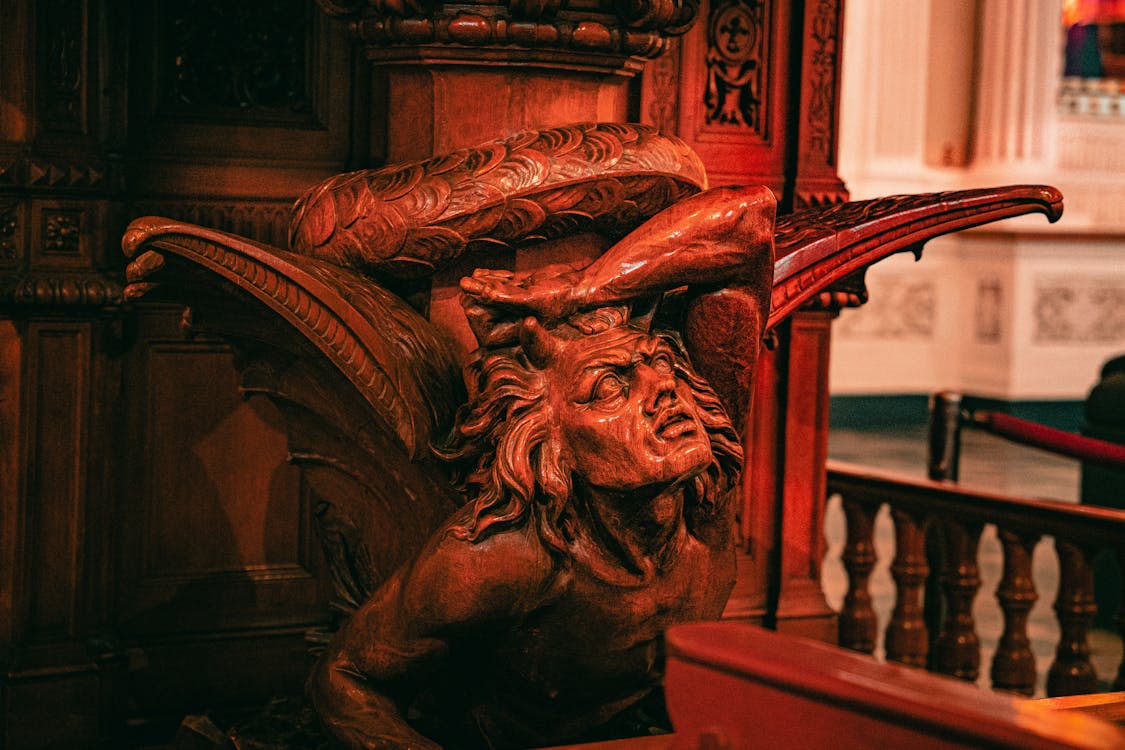Since the beginning of religious teaching, the concept of the devil and hell has terrified humanity. Through the ages, popular culture and religious tradition have depicted the devil as a red-skinned, fiery-horned demon. Theologian and author Jared Brock has however challenged this, claiming that we may be far from correct about hell and Satan.
Revisiting Common Beliefs About Hell

Jared Brock, author of A Devil Named Lucifer, has spent years dedicating his time to studying the afterlife, using scripture as his lens. Through his research, he has suggested that the concept we have of hell being a fortress of fire and torment, overseen by the devil is biblically inaccurate. He drew readings from the book of Revelation, pointing to passages that seem to paint a completely different picture altogether.
For instance, Revelation 12:15 describes: “The serpent poured water like a river out of his mouth after the woman, to sweep her away with a flood.” This image alone contradicts the image of a fiery demon associated with hell. This suggests that the underworld has a more complex, metaphorical existence.
The Multiple Facets of Hell

Based on Brock’s findings, the Bible describes six individual places that could be depicted as hell. This suggests that the idea of a single location where sinners are condemned for eternity may be inaccurate. He raises questions about the nature of Hell, asking: “Are these physical? Are they spiritual? Are they forever? Additionally, are they for a limited period of time? And the answer to all of that is we just don’t know.” This uncertainty suggests a broader interpretation of what hell may be in the first place. Is it a literal realm or a symbol of separation from the divine?
The Red Devil: A Cultural Invention

The iconic symbolism of the Devil depicts him as a red-skinned, horned demon who wields a pitchfork. Brock, however, suggests that there is no basis in scripture portraying him as such. “I think culture just got so obsessed with this idea of this little red devil on your shoulder haunting you at all times,” he says.
Brock instead suggests that Satan is more of a spiritual entity, not a physical being. He appears as an attractive being, capable of temptation and deceptiveness. “There’s two words in the Bible for the devil. One means accuser, and one means adversary. Nothing is saying the devil can be in all places at all times. He’s not omnipresent like God is,” Brock explains.
Read More: 9 Spiritual Symbols and Their Meaning
The Fall of Lucifer

The tale of Lucifer falling from heaven is centrally based on Christian culture and theology. This provided a foundation for better understanding Satan’s role in how our journey from this to the next is played out. Revelation 12:7-9 recounts this cosmic battle.
“And war broke out in heaven: Michael and his angels fought with the dragon, and the dragon and his angels fought, but they did not prevail, nor was a place found for them in heaven any longer. So the great dragon was cast out, that serpent of old called the Devil and Satan, who deceives the whole world; he was cast to the earth, and his angels were cast out with him.” Brock emphasizes how this story is highly dramatized, leaving gaps for interpretation. Was this a physical battle? Is the dragon purely metaphorical? These questions remain unanswered.
Hell as a Concept, Not a Place

The key takeaway from Brock’s analysis is that hell may not be a physical location after all. It could instead be a representation of the spiritual separation from God, reserved for those who innately reject his divine grace. This concept challenges the traditional depiction of fiery torment and eternal punishment.
Rethinking the Devil and Hell

Brock’s insights suggest and encourage readers to question their cultural and theological assumptions and teachings that surround the concept of the devil and hell. As much as the Bible provides a vivid image of his image, there is evidence that suggests it is much more of a metaphysical or symbolic suggestion. This leaves room for varied interpretations.
Read More: Woman Describes Terrifying Vision of Hell Before Being ‘Taken to Heaven’

